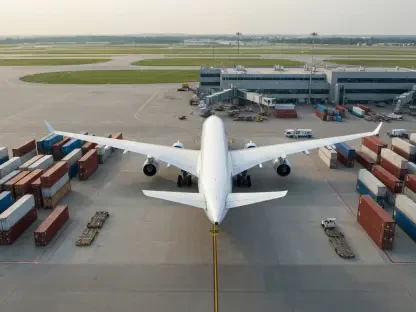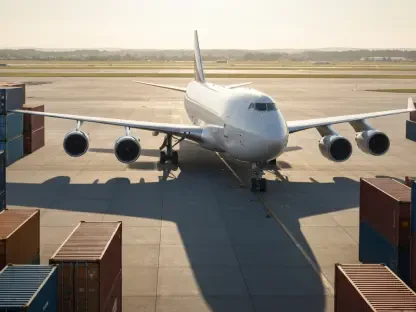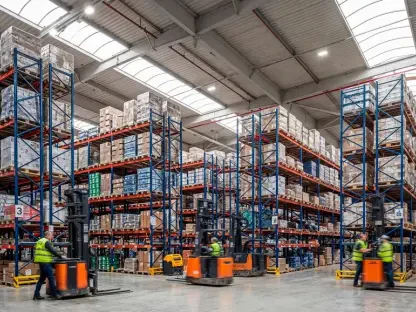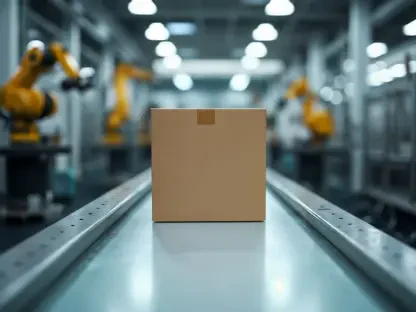Rohit Laila, a seasoned expert in the logistics industry with a deep understanding of supply chain management and an advocate for technological advancements, shares his insights on the challenges facing the Port of Los Angeles. This discussion explores the impact of tariffs on cargo volumes, the economic repercussions for consumers and businesses, and the potential long-term consequences if current trade disputes remain unresolved.
What factors led to the decrease in cargo volume at the Port of Los Angeles in May 2025?
The decrease in cargo volume at the Port of Los Angeles can largely be attributed to the imposition of tariffs, which have disrupted the smooth flow of goods. These tariffs create an environment of uncertainty that complicates forecasting and planning for businesses engaged in international trade. Additionally, this instability leads to reduced shipments both in and out of the port, as businesses are unsure of what future costs and policies might look like.
How have tariffs specifically impacted the import and export processes at the port?
Tariffs have significantly increased the cost of doing business. For importers, this means higher landing costs, which can discourage orders or lead them to seek alternative shipping routes or suppliers. For exporters, retaliatory tariffs from other nations can make American products less competitive abroad, impacting the overall volume of goods leaving the port.
Can you elaborate on why May, which is typically a strong month, saw such a significant drop in imports compared to April?
May traditionally sees a rise in volume as businesses prepare for the peak season, anticipating increased demand later in the year. However, with the current tariff situation, many businesses hesitated to make large import orders, waiting to see if the trade policies would stabilize. This precautionary stance resulted in a notable decrease in imports, breaking the usual seasonal pattern.
What long-term effects do you anticipate if comprehensive trade agreements are not reached soon?
Without comprehensive trade agreements, we could see lasting harm to consumer confidence and spending, as prices would likely remain elevated due to tariffs. For businesses, ongoing restrictions could force a rethink of supply chains, potentially moving manufacturing out of traditionally reliable locations. This would have ripple effects on labor markets and could lead to a restructuring of global trade networks.
In what ways are consumers already feeling the impact of these tariffs, especially with regard to prices and product selection?
Consumers are facing higher prices at checkouts and a less diverse range of products. Tariffs directly raise the cost of imported goods and manufacturers, in turn, pass these increased costs to consumers. Additionally, businesses may choose to pull products off shelves if they become too costly to import, thereby reducing selection.
How does the current trade environment create hardships for businesses and labor at the Port of Los Angeles?
The unpredictability of trade policies is a significant challenge for businesses. Without stable agreements, companies cannot plan effectively, impacting everything from staffing to logistical needs. Labor at the Port of Los Angeles faces uncertainty with potential fluctuations in cargo volumes, which can lead to sudden changes in work hours or conditions.
According to the Budget Lab at Yale, what did the modeling reveal about the impact of tariffs on American households?
The Budget Lab found that tariffs are essentially a hidden tax affecting household budgets by raising average prices. The model indicates a loss of purchasing power equivalent to $2,500 per household per year, disproportionately affecting lower-income families who spend a larger share of their income on necessities that have become more expensive.
Why do lower-income and working-class families experience a bigger financial hit from tariffs compared to higher-income families?
Lower-income families typically spend a larger percentage of their earnings on essential goods, many of which are imported and subject to tariffs. With the price increases due to tariffs, their limited budgets are squeezed further, leaving less room for savings or discretionary spending. Meanwhile, higher-income families have more financial flexibility to absorb these extra costs.
Which specific products are likely to see the most significant price increases due to tariffs?
Products such as shoes, apparel, and consumer electronics are particularly impacted. These items often have complex supply chains that stretch across several countries, making them vulnerable to various tariffs imposed along the way. This complexity elevates prices significantly when tariffs are enacted.
Could you provide more details on the changes in loaded imports and exports at the port from May 2024 to May 2025?
Loaded imports in May 2025 were down by 9% compared to the previous year, while loaded exports decreased by 5%. This reduction reflects the broader hesitancy in trade activities amidst the prevailing tariff environment. Additionally, the increase in empty container processing suggests a shift in shipping strategies and supply chain adjustments.
The port reported an increase in processed empty container units. What does this indicate about current trade patterns?
An increase in empty containers suggests an imbalance in trade or a redirection of shipping efforts. It often indicates that more goods are being unloaded rather than loaded, possibly due to fewer exports or more imports than previously anticipated. This pattern can reflect a pivot in trade flows or a reaction to storage constraints at the port.
Despite the monthly dip, how has the Port of Los Angeles managed to maintain a 4% growth in overall TEUs for the year up to May 2025?
The growth in TEUs could be attributed to the accumulation of gains earlier in the year when the tariffs had not yet taken full effect or were anticipated but not realized. Additionally, part of this growth can result from strategic adjustments by businesses to circumvent higher tariffs, including stockpiling goods in advance.
Do you have any advice for our readers?
Stay informed and flexible in your economic decisions. Understanding the broader trade environment can help you anticipate changes in prices and adjust your purchasing behavior accordingly. Businesses and consumers alike should be prepared to adapt to evolving trade policies, potentially embracing innovative solutions to mitigate economic impacts.









